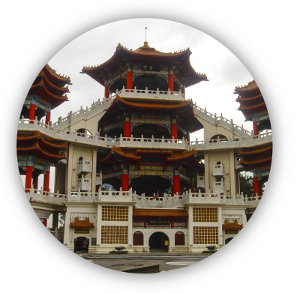 As each "style" attempts to conquer its siblings, the illusion of separateness has developed. In truth, it is one ancient art, separated by the vagaries of the teachers, the families, the regions and the politics. Tao Gong, Chi Gong, Lee Hueh Ba Fah, TaiJi Quan, Shing Yi, Bagua Zang -- are all parts of the one great art. Today, there is no one person that encompasses all of TaiJi.
As each "style" attempts to conquer its siblings, the illusion of separateness has developed. In truth, it is one ancient art, separated by the vagaries of the teachers, the families, the regions and the politics. Tao Gong, Chi Gong, Lee Hueh Ba Fah, TaiJi Quan, Shing Yi, Bagua Zang -- are all parts of the one great art. Today, there is no one person that encompasses all of TaiJi.